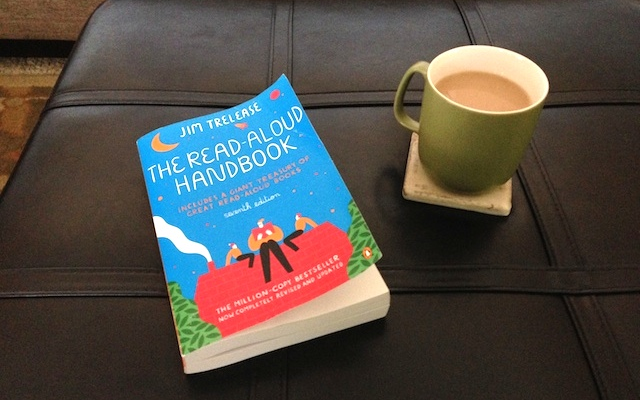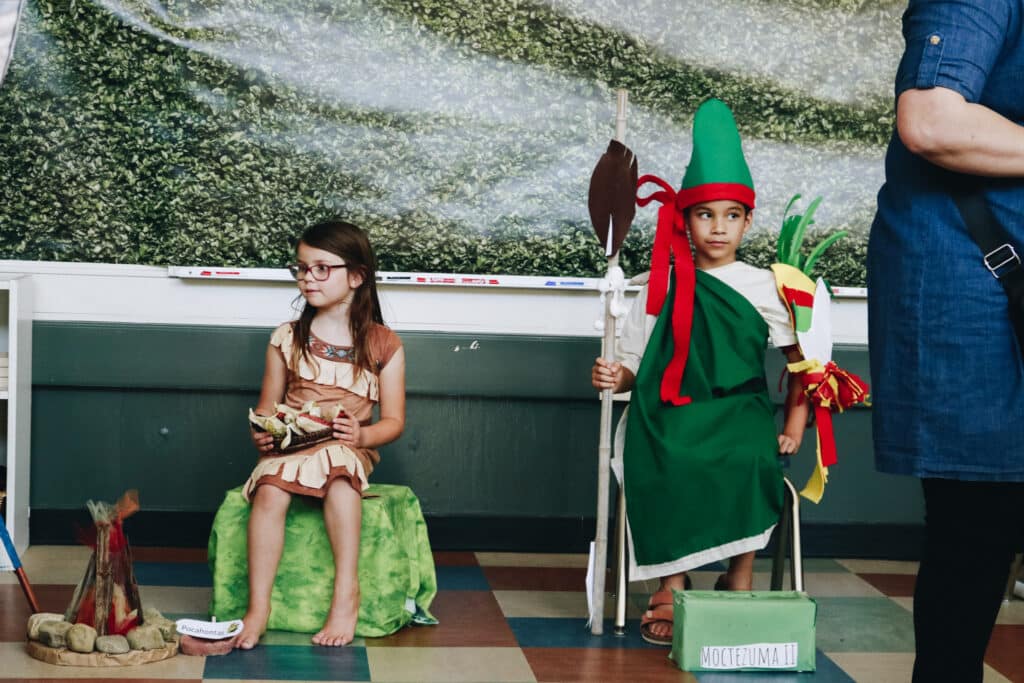
There’s something special to share today as we peek into what’s ahead for this school year. We have an exciting new blog series coming to Down Home, and today we want to introduce you to it:
Pedagogic Ponderings
Mrs. Burns’ Book Review Blog
Pedagogic Ponderings is a blog review of pedagogic (educational) books by our own Jenna Burns. After teaching History and Language Arts at SLOCA UMS for five years, Jenna is taking this year off of teaching to care for her new daughter, Julianna. But she is not taking a break from learning! She is seeking out the best books on education, reading them, pondering them, and reviewing them for us. In her blog she gives us a snapshot of the books and how their educational philosophies connect to what we are doing at SLOCA. We hope her blog helps you better understand classical education and our school.
This first post in the series is especially timely, as it’s about the book we discussed at our Parent Reading Group held last night. If you attended the discussion, you know how rich and helpful this book is, and if you weren’t able to make it, today’s blog should entice you to dig into it! So without any further ado, enjoy the first installment of Pedagogic Ponderings:

This month I’m reviewing Jim Trelease’s The Read-Aloud Handbook. I chose this book to review because the school is asking all families and all teachers to read it. Why? Because Trelease’s book builds the case for reading aloud to your children, arguing it will help them succeed in their education and grow into lifelong readers. He provides guidelines and practical advice on how to successfully read aloud at home, answering every question a person could think up on the topic. So, read on to find out: Mrs. Burns’ personal favorite bedtime story, an explanation of reading aloud at home, and how reading aloud will enrich your and your child’s educational experience at SLOCA.
The message of this book is simple: Read aloud daily to your child at every age. Since I already deeply believe in this, I was skeptical the book had much to offer me. I don’t believe in its message for the reasons you may think. Not because I’ve been a literature teacher for seven years or because I majored in Literature at Cal Poly. Not because I love books and believe they teach us how to be good writers, speakers, and good people. I believe this because I have loved the experience of being read aloud to at every age.
In the early months after my first daughter Aria’s death my husband, Brian, would read aloud to me for hours every night. The warmth of his voice as he stroked my hair was the only way I could fall asleep. It had nothing to do with the book itself and everything to do with how his presence, his voice, and his touch made me feel like I had found a small safe place in my shattered world.
I loved being read to as a little girl as well. I remember before bedtime stories my dad taking my foot and rubbing it against his five o’clock shadow, always making me giggle because it tickled. I remember my favorite stories were the ones my dad made up; ones about two princess ladybugs, who just so happened to be named the same names as my best friend, Jessica and me. There is little else from my childhood that holds such powerful memories of feeling safe and loved than bedtime stories with my dad.

{source}
These experiences have made me a firm believer in the powerful bonding that occurs when we read books aloud (something Trelease talks about as well), and so as I sat down with the book, tea, and a treat (Trader Joe’s cookie butter over Graham crackers – yum and yum!), I wondered if The Read-Aloud Handbook would really be beneficial for me. Surprisingly, I found this book instantly interesting, informative, and delightful. It affirmed what I believed while expanding my understanding of the why and especially the how of reading aloud. Brian walked in on me a little while later, and with eyebrow raised and asked, “Are you crying over a book about reading?” Well, yes. Yes, I was. And when you read this book you just may cry too. You have been warned!
The Book in a Nutshell:
First of all, don’t panic! The book is not really as long as it looks. It is divided into two parts: ten chapters and Trelease’s list of good read-alouds books.
The second half of the book, The Read-Aloud Treasury, is a comprehensive list of books that make good read-alouds at every level (infancy to adult). As I read this section I had my “Amazon Wishlist” open and I added books to it as I went. There are now many, many, books on my wishlist! You will see several books on this list that we have read at SLOCA and many more that are not classics or that we may not necessarily recommend as quality literature. Even still, it is a great resource to help you fill your home and surround your children with books.

{source}
The chapters are divided into sections of commonly asked questions. Trelease’s answers rely heavily on evidence, both scientific and anecdotal. Here are my three favorite take-aways:
One – Read-aloud to your children (moms and dads) from the time they are in the womb until they move out of the house because reading aloud builds your children’s: vocabulary, love of reading, background knowledge, ability to read, and the bond between them and you. Another goal of reading-aloud is to expand the breadth of literature that will interest our children. Kids may be intimidated by or disinterested in a great work of classical literature. This is where we as parents can jump in, be enthusiastic, and provide a relational time of reading together. Eventually this will help our children become confident and interested in tackling authors like Shakespeare and Chaucer.
Two – In addition to being read-aloud to, children should be reading silently to themselves. To increase success in independent reading, students should have easy access to lots of books, ownership of books, and the choice in what books to read. While Trelease encourages parents to let children read whatever they want, SLOCA urges families to instead guide their choices. “Mind candy” books have short and simple plots, characters, sentences, and vocabulary. A child who regularly ingests them will not find the complexities of the classics palatable. So, as you provide your child with healthy foods, we suggest providing your child with plenty of choices of well-written books. We try to make this easy on you by providing our Novel Adventures Book list. Check it out at the end of this post!
Three – In digital learning (e-books, internet, audio books, TV, etc) there are benefits and drawbacks, so limit your child’s exposure and when you do allow digital learning approach it mindfully.
How The Read-Aloud Handbook relates to SLOCA:
You may wonder: Is reading aloud a component of classical education philosophy? I’m going to answer that with a yes and a no. You won’t find reading aloud specifically mentioned in the trivium, but even
still, we feel it is one important tool we can use to successfully educate our children in a classical manner. A key goal of classical education is to, “implant a will and facility for learning; it should produce not learned but learning people. The truly human society is a learning society, where grandparents, parents, and children are students together,” (Eric Hoffer, page xi). Trelease makes the argument that reading aloud creates this environment of people who love to learn, learning together. This is also our mission at SLOCA, to “nurture a lifelong love of learning” as a community.

{photo by Rachel Neumann}
Reading history and the classics is a core SLOCA value, and reading these aloud is a wonderful way to create a love of learning and sense of belonging in your child. If you read-aloud our curriculum to your child I can (practically) guarantee two things happening. First, your child will get way more out of the reading experience. He will comprehend more, remember more, and be able to participate more in class. Second, he will enjoy homeschooling more. There will be more happy days and less struggling at home. Here’s a quick example. Two of my high schoolers (siblings) asked their mom to read Moby Dick (a very difficult text) aloud. Evident to me as their teacher, these students had an excellent grasp of the novel and an increased enjoyment of the story. In fact, a card game based on the book is now a favorite in their house.
So, you will hear your teacher asking you to read the literature and history books aloud to your child. This book clearly and thoroughly explains why we think this is such an important part of home education. Just about any question you may have when it comes to reading aloud is answered in this book (for example: What if my student doesn’t want me to read aloud? What if he can’t keep still? Isn’t he too old to be read-aloud to?). So, if you find yourself struggling to do read-alouds this book is a fantastic resource. Enjoy!
Trelease, Jim. The Read-Aloud Handbook. New York: Penguin Books, 2013. Print.
Coming up next: A review of Anthony Esolen’s Ten Ways to Destroy the Imagination of your Child

Click here to go to our password-protected Parent Resource pge, which has links to the Novel Adventures Reading List as well as reading lists for budding readers, high schoolers and adults.
For more lists of great book choices, two other books were recommended at last night's reading group. They are: Honey for a Child's Heart by Gladys Hunt, and Books Children Love by Elizabeth Wilson.
It’s evident why we are encouraging parents to read The Read-Aloud Handbook this summer! Thank you so much, Jenna, for giving us a taste of this remarkable resource. We are super excited about the new blog series, Pedagogic Ponderings, and look forward to your next installment!
If you’ve read The Read-Aloud Handbook, what were some of your take-aways? Leave a comment and let’s continue the discussion!
Other reviews in this series:
Ten Ways to Destroy the Imagination of your Child by Anthony Esolen
The Well-Trained Mind by Susan Wise Bauer and Jesse Wise
The Core by Leigh A. Bortins
How to Teach Your Children Shakespeare by Ken Ludwig
Climbing Parnassus by Tracy Lee Simmons
Last Child in the Woods: Saving our Children from Nature-Deficit Disorder by Richard Louv
Play: How it Shapes the Brian, Opens the Imagination, and Invigorates the Soul by Dr. Stuart Brown
SLO Classical Academy is not affiliated with any of the above mentioned websites or businesses.











